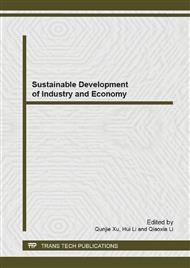p.371
p.377
p.381
p.385
p.389
p.393
p.399
p.404
p.408
Comparison of Energy Efficiency Standards in the Public Building of China, the US, the UK
Abstract:
The China construction industry accounts for about 30% of total energy consumption, a high proportion of the energy consumed, which causes a large amount of emissions of greenhouse gas. This paper takes a look at the China national standard GB50189-2005, Design Standard for Energy Efficiency of Public Buildings, the ASHRAE90.1 of US and the part L of UK, and then compares the similarities and differences between the three design standards. At the end, relevant suggestion to tackle these weaknesses for long-term energy efficiency development in public buildings are proposed in this paper.
Info:
Periodical:
Pages:
389-392
Citation:
Online since:
December 2013
Authors:
Keywords:
Price:
Сopyright:
© 2014 Trans Tech Publications Ltd. All Rights Reserved
Share:
Citation:


